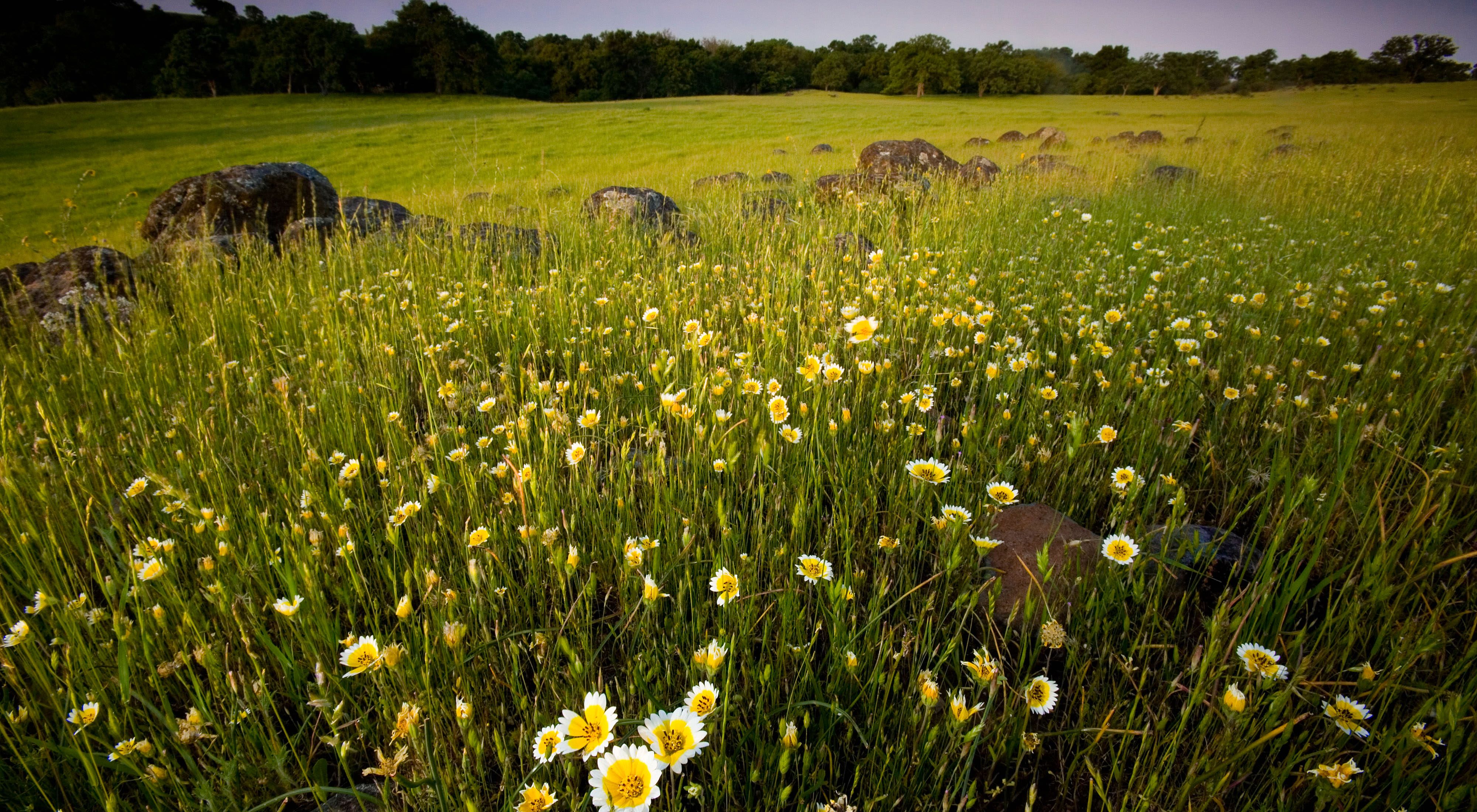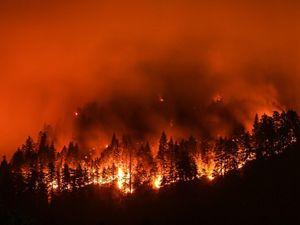Description
In an unfragmented landscape of blue oak woodlands, streamside forests and vast grasslands seasonally ablaze with wildflowers, wildlife thrives and ranchers continue the state’s historic legacy of cattle husbandry. This is one of California’s final frontiers—the area in the north-central portion of the state known as the Lassen Foothills.
Development and subdivision threaten this intact land, with pernicious implications for the ranching community and wildlife. At risk here are the state’s largest migratory deer herd, tundra swans, blue herons, burrowing owls and the threatened yellow-legged frog. Rare vernal pools also grace this area, creating habitat for endangered fairy shrimp and other species.
Water from freshwater springs makes the Lassen Foothills pivotal to the survival of several species of native fish. While other areas of the U.S. succumb to the effects of climate change—including rising water temperatures that are lethal to spawning—a reliable supply of cold, clear spring water from the Cascade Mountains supports several runs of threatened and endangered Chinook salmon, as well as sturgeon and steelhead trout in Deer, Mill and Battle Creeks.
The Power of Change
In Battle Creek, we are proving that California can successfully balance its demand for energy with the needs of wildlife. TNC is engaged in a landmark effort to free up nearly 40 miles of prime salmon and steelhead spawning habitat on the creek, historically one of the only Sacramento River tributaries that supported all four seasonal runs of Chinook salmon and steelhead.
Dammed for more than a century, Battle Creek today is the subject of one of the most significant salmon restoration efforts in California’s history, bringing together diverse groups, including dam owner Pacific Gas & Electric and four public agencies.
TNC has been a partner in the Battle Creek Restoration Project from its inception, working with the Packard Foundation to bring private funding to the project. TNC has also been the lead organization in protecting the Battle Creek stream corridor though the purchase of conservation easements from willing landowners, now totaling nearly 9,000 acres.
Once the project is complete, Battle Creek will both provide suitable habitat for an iconic California species and continue to serve as a source of renewable energy for nearby communities.
A Living Laboratory
TNC, in partnership with individuals and organizations, is not only working to preserve this unique land—we have turned it into a “living laboratory.”
Our research has produced innovative, exportable solutions to challenges such as invasive species, which are problematic from both a ranching and a conservation point of view. A combination of compatible grazing practices and prescribed burns—conducted in collaboration with ranchers and the California Department of Forestry and Fire Protection—promotes better habitat for wildlife and more healthy forage for cattle.
Vina Plains Preserve
Within the Lassen Foothills project, TNC established the Vina Plains Preserve—4,600 acres of vernal pool wetlands and grasslands that sustain many rare, threatened and endangered species. In spring, these grasslands teem with wildflowers, such as shooting stars, larkspur, lupine and brodiaeas. Goldfields, meadowfoams and popcorn flowers lace the preserve’s vernal pools.
Leased to a local rancher, who is the recipient of an environmental stewardship award, Vina Plains has demonstrated the benefits of sustainable grazing strategies. These strategies include “pasture resting,” in which cattle rotate among fields. This TNC program has allowed wildflowers to thrive and has provided grassland birds with undisturbed habitat in which to rear their young.
Dye Creek Preserve
The 37,540-acre Dye Creek Preserve, located within the Lassen Foothills, keeps alive both a rich variety of species and the hopes of the ranching community. A working ranch managed by The Nature Conservancy for the state, Dye Creek serves as a site for developing land-management techniques that foster conservation-compatible ranching. Continuous landscapes such as this one also offer the wide-open spaces paramount to mammals that require large ranges to survive.
In addition, sustainable hunting operations have been carried out on the property since 1965.



